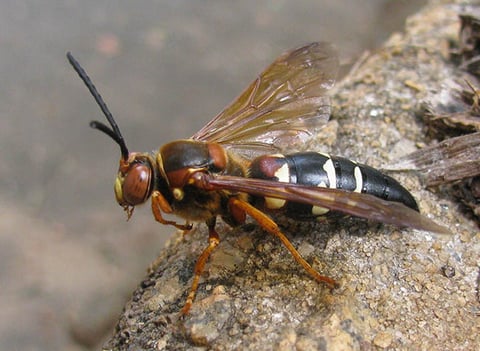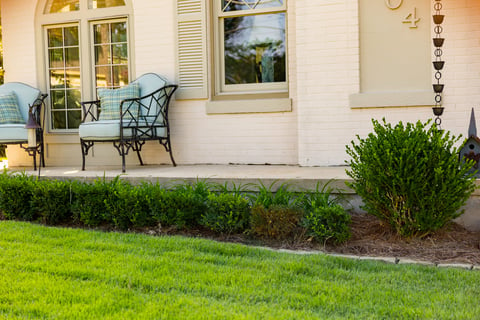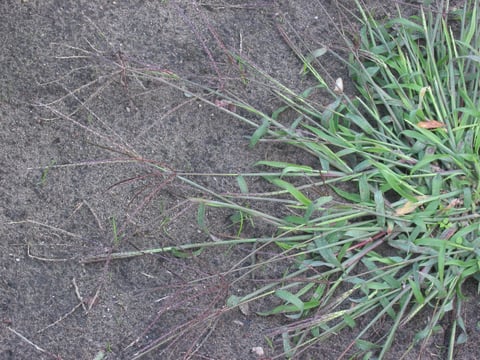


Your grass is supposed to be green.
This makes brown grass a confusing sight. You want to know what’s causing the problem and whether the grass is still alive. And you want your green grass back.
Determining whether your grass is dead or dealing with a specific issue can be tough. Grass sometimes goes into dormancy, a natural protection mechanism for grass to withstand weather changes.
There's a lot to keep in mind, including:
Let’s talk about signs of dead grass and how to compare dead vs. dormant grass in Tupelo, MS.
If you see grass that looks concerning to you and doesn’t have its standard color or vigor, it may be time to check for signs of dead grass in North Mississippi.
Here are a few ways you can determine the state of your lawn.
Since it can be challenging to tell the difference between dead vs. dormant grass, you can try the tug test to determine if you have dead grass.
To do this, seek a section of brown grass, grab some in your hand and tug on it. If the grass comes out very quickly without resistance, we’re sorry to tell you that it might be dead.
Dead grass doesn’t come back, so the next step is to remove and replant your lawn, which you can do by seeding or sodding. Or maybe you want to do something different with this area, such as add a groundcover or a landscape bed.
Either way, you’ll need to properly prepare the area and take care of it afterward with adequate water and nutrition to ensure good germination.
Another thing you can look for when determining signs of dead grass is looking for patterns. Is the whole lawn brown or do you see patterns of brown grass?

When your whole lawn is the same brown color, it might be dormant. But if you have circles of brown grass, those spots may be diseased or even dead. This is a good time to call in a lawn care professional to rule out possible pests or diseases.
Temperature and weather swings can change your lawn’s appearance and cause you to question whether you have dead or dormant grass.
We grow primarily warm-season grass species in Mississippi, including Bermudagrass, zoysia, centipede, St. Augustine, and fescue lawns.
Warm-season grasses are like the weather conditions in the southern states, which are best where the air is salty and the soil is sandier. They thrive in temperatures between 75 degrees and 90 degrees Fahrenheit.
Warm-season grasses work better in sandier soils and have much higher drought tolerance, so they can take the extra heat. As more challenging turf varieties, they can also handle traffic pretty well.
But these grasses do not like the cold. This means if temperatures dip below 50 degrees Fahrenheit, these types of lawns turn brown. In this case, your grass would be dormant and not dead.
On the other hand, cool-season grasses, which are grown mostly in the northern states or the upper two-thirds of the U.S., can go dormant during prolonged periods of high heat. This means the grass is still alive and will become green again when the temperature cools.
Some people who live in the southern U.S. will actually overseed with cool-season grass in the winter after their warm-season grass turns brown to maintain a green lawn appearance all year long.
Excessive heat and dry conditions can happen in the summer months in North Mississippi, and this can cause your grass to panic. This can lead to dead grass and weeds if proper steps aren’t taken to ensure your lawn gets the water it needs.
You’ll see your grass return to its proper color and vigor by watering properly. If your grass is dead, watering won’t bring it back.

To keep your grass receiving the water it needs, irrigate one to two times weekly for approximately 45 to 60 minutes. You want to provide your grass with a good soak; you don’t want to water for a couple minutes or that water won’t reach your lawn’s roots.
Your goal should be to provide your lawn with 1 inch of water each week.
If you’ve performed the dead vs. dormant grass tests and your lawn shows no sign of life, it may be time to reseed, repair, or replace your lawn.
A great way to do that is with sod. When new sod is installed, you have some essential care tips you must focus on.
It starts with watering properly to ensure strong roots. You want to water sod throughout the day to prevent any drying or shrinking. Consistent moisture is essential for those first two weeks after installation to ensure the sod takes root. Then, watering for another two weeks can prevent any drying out.

Once you do that, follow the watering schedule outlined above. Remember to water your sod in the early morning. Watering during the warmest part of the day, such as mid-day or the afternoon, can lead to evaporation over absorption, which you don’t want.
After 10 to 14 days, your new sod will root, and then it's time to mow. Never remove more than one-third of the grass at any one time. You want to limit stress and encourage full, thick grass. This kind of strong grass will be able to ensure drought, weeds, disease, and pests.
Then, a lawn care professional in North Mississippi can deliver a quality fertilizer schedule to ensure your new grass gets the nutrients it needs to thrive.
Finally, as you use sod to replace dead or dormant grass, aerating that new lawn within six months to one year of installation and then annually after that can reduce compaction and amplify nutrient, water, and oxygen uptake.
Aeration is using an aerator to create small holes in the soil to create this space.
Determining whether you have dead or dormant grass may take some trial and error. We hope these tips can help you assess your lawn and better conduct dormant grass identification.
We know this can be confusing. As you’re determining the state of your lawn, you might need some help figuring this out and doing everything from identifying your current grass state, reviving your lawn, or caring for the new lawn you must replace.
As you address your lawn issues, let Lawn & Pest Solutions help. We are experts in caring for North Mississippi lawns. And we can ensure your lawn survives anything Mother Nature throws at it, so you can get that green lawn you love again.
Ready to learn why Lawn & Pest Solutions could be your choice for lawn care services in Tupelo, MS and North Mississippi? We’re excited to learn more about you and help you have the best lawn on the block. Get started today with a free quote. We can prepare a customized plan perfect for you and your lawn.





